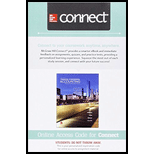
Concept explainers
1. a.
Prepare the
1. a.
Explanation of Solution
Journal entry:
Journal entry is a set of economic events which can be measured in monetary terms. These are recorded chronologically and systematically.
Rules of Debit and Credit:
Following rules are followed for debiting and crediting different accounts while they occur in business transactions:
- Debit, all increase in assets, expenses and dividends, all decrease in liabilities, revenues and stockholders’ equities.
- Credit, all increase in liabilities, revenues, and stockholders’ equities, all decrease in assets, and expenses.
Lower-of-cost-or-market: The lower-of-cost-or-market (LCM) is a method which requires the reporting of the ending merchandise inventory in the financial statement of a company, at its current market value or at is historical cost price, whichever is less.
Prepare the journal entry for the loss from the write-down of inventory as follows:
| Date | Account Title and Explanation | Post Ref. | Debit | Credit |
| Loss from write-down of inventory (2) | $2,400 | |||
| Inventory | $2,400 | |||
| (To record the loss from write-down of inventory) |
Table (1)
- Loss from write-down of inventory is an operating expense account and decreases the
stockholders’ equity account by $2,400. Therefore, debit loss from write-down of inventory with $2,400. - Inventory is an asset account, and it decreases the value of assets by $2,400. Therefore, credit inventory account with $2,400.
Working note:
Calculate the value of replacement cost
Calculate loss from write-down of inventory
1. b.
Prepare the journal entries to record the sales revenue and cost of goods sold (FIFO).
1. b.
Explanation of Solution
Prepare the journal entries to record the sales revenue and cost of goods sold as follows:
| Date | Account Title and Explanation | Post Ref. | Debit | Credit |
| Cash (3) | $5,250 | |||
| Sales revenue | $5,250 | |||
| (To record the loss from write-down of inventory) |
Table (1)
- Cash is an asset account, and it increases the value of assets by $5,250. Therefore, debit the cash account with $5,250.
- Sales revenue is a revenue account and increases the stockholders’ equity account by $5,250. Therefore, credit the sales account with $5,250.
Working note:
Calculate the value of sales revenue
| Date | Account Title and Explanation | Post Ref. | Debit | Credit |
| Cost of goods sold (4) | $3,750 | |||
| Inventory | $3,750 | |||
| (To record the cost of goods sold incurred) |
Table (1)
- Cost of goods sold is an operating expense account and decreases the stockholders’ equity account by $3,750. Therefore, debit cost of goods account with $3,750.
- Inventory is an asset account, and it decreases the value of assets by $3,750. Therefore, credit inventory account with $3,750.
Working note:
Calculate the value of cost of goods sold (lower-of-cost-or-market)
2.
Prepare the journal entries for the shrinkage loss under FIFO and LIFO method, and explain the cost flow assumption that gives the lowest net income for the period.
2.
Explanation of Solution
Prepare the journal entries for the shrinkage loss under FIFO and LIFO method as follows:
a. Shrinkage loss under FIFO method
| Date | Account Title and Explanation | Post Ref. | Debit | Credit |
| Cost of goods sold (6) | $1,200 | |||
| Inventory | $1,200 | |||
| To record the shrinkage loss incurred under FIFO method) |
Table (1)
- Cost of goods sold is an operating expense account and decreases the stockholders’ equity account by $1,200. Therefore, debit cost of goods account with $1,200.
- Inventory is an asset account, and it decreases the value of assets by $1,200. Therefore, credit inventory account with $1,200.
Working note:
Calculate the units of shrinkage loss
b. Shrinkage loss under LIFO method
| Date | Account Title and Explanation | Post Ref. | Debit | Credit |
| Cost of goods sold (6) | $930 | |||
| Inventory | $930 | |||
| (To record the shrinkage loss incurred under LIFO method) |
Table (1)
- Cost of goods sold is an operating expense account and decreases the stockholders’ equity account by $930. Therefore, debit cost of goods account with $930.
- Inventory is an asset account, and it decreases the value of assets by $930. Therefore, credit inventory account with $930.
Working note:
c. Explain the cost flow assumption that gives the lowest net income for the period as follows:
LIFO produces the lowest net income because, under the LIFO method, the costs of the last purchased items are considered as the cost of goods sold for the items which are sold first. When the inventory costs are rising, LIFO method would produce the higher cost of goods sold, because of the increased purchase price of the last item. The higher cost of goods sold reduces the value of net income, at the same time the lower amount of net income produces less income tax expense. Hence, LIFO method gives the lowest net income.
Want to see more full solutions like this?
Chapter 8 Solutions
Connect Access Card for Financial and Managerial Accounting

 AccountingAccountingISBN:9781337272094Author:WARREN, Carl S., Reeve, James M., Duchac, Jonathan E.Publisher:Cengage Learning,
AccountingAccountingISBN:9781337272094Author:WARREN, Carl S., Reeve, James M., Duchac, Jonathan E.Publisher:Cengage Learning, Accounting Information SystemsAccountingISBN:9781337619202Author:Hall, James A.Publisher:Cengage Learning,
Accounting Information SystemsAccountingISBN:9781337619202Author:Hall, James A.Publisher:Cengage Learning, Horngren's Cost Accounting: A Managerial Emphasis...AccountingISBN:9780134475585Author:Srikant M. Datar, Madhav V. RajanPublisher:PEARSON
Horngren's Cost Accounting: A Managerial Emphasis...AccountingISBN:9780134475585Author:Srikant M. Datar, Madhav V. RajanPublisher:PEARSON Intermediate AccountingAccountingISBN:9781259722660Author:J. David Spiceland, Mark W. Nelson, Wayne M ThomasPublisher:McGraw-Hill Education
Intermediate AccountingAccountingISBN:9781259722660Author:J. David Spiceland, Mark W. Nelson, Wayne M ThomasPublisher:McGraw-Hill Education Financial and Managerial AccountingAccountingISBN:9781259726705Author:John J Wild, Ken W. Shaw, Barbara Chiappetta Fundamental Accounting PrinciplesPublisher:McGraw-Hill Education
Financial and Managerial AccountingAccountingISBN:9781259726705Author:John J Wild, Ken W. Shaw, Barbara Chiappetta Fundamental Accounting PrinciplesPublisher:McGraw-Hill Education





